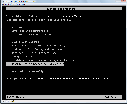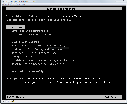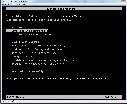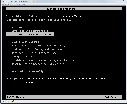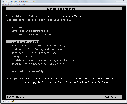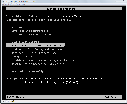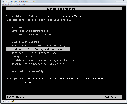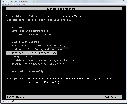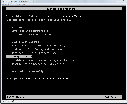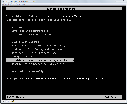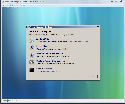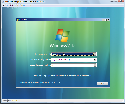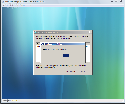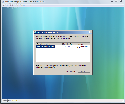Right... Windows Vista crashing and burning is the worst case scenario, but a scenario nonetheless, and even more than that, a viable possibility. If Windows has taught us anything, especially Windows XP, it is that there is a thin line between a completely functional operating system one minute, and a perpetual error status the next. Windows XP was no stranger to system crashes. Not even by a long shot. And this is why Windows Vista comes with a luxuriant arsenal of tools addressing just such worst case scenarios. As you will see, some utilities have survived from Windows XP, and some are brand new to Vista.
However, in Windows Vista, system crashes, either localized or general are no longer catastrophic in nature. But you do have to keep something in mind. A crash is seldom the exclusive fault of Vista. The fact of the matter is that the operating system is just a collection of application programming interfaces. Left alone to run in its basic configuration, stripped down of all third party code from device drivers to various applications Vista will be quite hard to crash, if not even impossible. I heard an interesting perspective in relation to operating system failures. Something in the line that you have to work hard to crash Linux, but you simply have to work on Windows to crash it.
Well, no copy of Vista in use is bare of third party code. The platform has to integrate seamlessly with the hardware it is running on via device drivers and will also grow with an inherent assortment of programs, form text editing applications to games, and to whatever the user might have deployed. Sometimes it?s the way third party code bundled with Vista, sometimes applications can generate exceptions and sometimes it?s a Vista error or even a hardware failure, at the source of a system crash. According to Microsoft, Vista is, in addition to an apex of security, also an epitome of performance, reliability, compatibility and stability. Not entirely true, given the collection of troubleshooting and repair options that ship by default with the platform.
Going for the Lesser Evil...
If only Vista errors were like lightening, never striking twice in the same place. Well, that is obviously not the case. The lesser evil involves, of course, errors that go away by themselves. Generally speaking, this is the purpose of the Restart. In certain situations, whatever problem that emerges can be easily resolved via a restart and nothing more. Once Vista reboots, the issue will be gone, functionality is restored completely and you can go about your business as if nothing happened.
But what do you do when the error sticks even after you restart Vista? Well, if the operating system is able to start normally, then half of the error is already resolved. All you have to do is pinpoint its source. Usually, an exception can be associated with one of the last tasks you, a program, or the operating system performed. New installed applications, drivers, modifications in the settings of the operating system, uninstalled programs, freshly deployed updates or upgrades. You will have to think about all the possible alterations introduced to Vista from the time it was functioning as clock-work to the point where it got stuck on alerting you about a continuous error. Revert all modifications and you should return Vista to its normal status.
There is also the possibility that you just won't be able to put your finger on it. Either because you are helping a friend, or administering another machine, or due to an anodyne update that runs in the background with the exception of an easy to forget approval dialog box. In such a case, there are three things that you should keep in mind: Control Panel, Device Manager and msconfig.exe. From Control Panel you will be able to uninstall any program or Windows updates installed that might cause the issue. By default, Control Panel will only show all the applications installed on your system. You will have to click on the Installed Updates option under the Tasks menu in the left pane.
In case you did not know it, Device Manager has an additional role to displaying the hardware configuration on your machine. It helps you to keep track of all your installed device drivers. Through Device Manager, you not only can Scan for Hardware Changes, but also Update Driver Software, Uninstall drivers; simply disable them or Roll Back Driver to a previous working version. If a faulty driver is responsible for your problems, then Device Manager will help you deal with the issue. Just navigate to your various hardware components, select them and you will be permitted to manage the associated drivers.
Now, msconfig.exe is a breath of fresh air. It is also known as the System Configuration tool, and you can access it by entering either msconfig.exe or System Configuration in the search box under the Start Menu. Alternatively, you can go into the jungle of options that is Control Panel but why even bother as long as you have the great functionality of the Vista Desktop Search Mechanism. As long as you know what you are looking for you are all set with the Search functionality of the Start Menu or the Instant Search in the Control Panel window.
msconfig.exe will permit you to isolate the error in case Windows Vista starts approximately in a normal fashion, but the issue persists after reboot. First off, you can customize the Startup Selection. There are three options available at Normal startup: load all device drivers and services; Diagnostics startup: load basic devices and services only; and Selective startup with: load system services, load startup items and use original boot configuration. If the error is associated with either a program launching at startup, a driver or a service, you can disable such components and restart the operating system to locate the source of the problem.
Error, I Command You to Release My Vista!
Cmd and the System File Checker tool are great ways to see if Windows Vista is indeed responsible for your problems. The command line utility will scan Vista's system files and replace compromised items with the correct version. If for some reason Vista's system files are at fault, then the System File Checker is the way to go. The tool can be accessed via cmd. Simply enter "cmd" in the search box under the Start Menu and press Ctrl + Shift + Enter on the highlighted result in order to launch command prompt with elevated privileges. Now type "sfc /?" and you will have access to a list of options that you can implement with this command line utility.
What I recommend using is "sfc /scannow". Unlike "sfc / verifyonly" the scannow command will let Vista automatically check the file system and resolve any issues it encounters. The process is not exactly instantaneous, but it is automatic and it will take care of any issues with the file system. The additional options are described upon entering "sfc /?" and you can use them in accordance with your own preferences.
There Are Crashes... And Then There Are Crashes...
And then again there are crashes that completely kill Vista. You won't even get to the welcome screen. The operating system will refuse to boot. And there's nothing you can do about it... Or is it? Don't just hurry to reinstall Vista. There is more than one way to startup this baby... Just click on the adjacent thumbnails in order to understand what I am talking about. Windows Vista brings to the table a plethora of boot options. If the operating system refuses to startup, then Advanced Boot Options is the right answer for you. Just press F8 during the initial phase of the startup process and you will get the same display as the one illustrated in the screenshots.
In addition to starting Vista normally, you can also launch the operating system in Safe Mode, Safe Mode with Networking, Safe Mode with Command Prompt, Enable Boot Logging, Enable low-resolution video, Last Known Configuration, Directory Services Restore Mode, Debugging Mode, Disable automatic restart on system failure and Disable Driver Signature Enforcement. Browse through the screenshots in order to get an idea of what actions are performed by each option.
Essentially, Vista will be launched in a default 800X600 video resolution with only the most basic of services, drivers and programs. You can have network access, or work with the cmd if you choose so, but Vista will not load logon applications, startup items, device drivers etc. Safe mode is a basic, fundamental booting architecture, stripped down to the core. It shouldn't fail (it will in certain contexts, but that is a whole different matter, just keep on reading to find out how to manage such a scenario).
But if you do make it into Vista in Safe Mode, then you will have access to Control Panel, Event Viewer, msconfig.exe, Device Manager, and even to the Backup and Restore Center. Enable Boot Logging will create a list with all the drivers loaded during startup. The list will include the last file to load before a failure, pinpointing the exact source of the error. Enable Low-Resolution Video will take down the resolution to 640X400.
Directory Services Restore Mode and Debugging Mode are reserved for professionals working in Directory Services Repair Mode and via another computer with debugging software. Disable Automatic Restart On System Failure will help you take Vista out of a perpetual cycle of Crash ? Restart. And Disable Driver Signature Enforcement will permit unsigned drivers, or code that presents improper signatures to be loaded into the kernel.
One simple way to regain the functionality of your Vista operating system is to use the Last Known Good Configuration option. It will start the operating system in accordance with the same settings as the last successful boot attempt. The registry key HKLMSYSTEMCurrentControlSet is the place holder for an "image" although image is an improper term, for last working startup configuration.
Repair! Repair! That's It, I'm Bringing the Hammer!
When Safe Mode fails, there's always the Windows Recovery Environment. For this, you will need the Windows Vista installation media. This is pretty much your last option. Stick in the Vista DVD and then boot from it. However, do not install the operating system. Instead, choose the Repair your computer option. The Windows Recovery Environment will search for all Vista installations on the machine and highlight them. Only then will it present you with a list of System Recovery Options.
You will be able to perform a Startup Repair, a System Restore, a Windows Complete PC Restore, work with the command prompt or run the Windows Memory Diagnostic Tool. All the methods and options presented in here will deal with code failures. Hardware failures are in a whole different league altogether, and there is little that Vista can do about them. However, the operating system does include a memory diagnostic tool. And if the crash is associated with a RAM problem, the utility will tell you so. Otherwise, you can let the Windows Recovery Environment automatically fix any issues that are preventing Vista from starting, restore the operating system to an earlier point in time or restore your machine from a backup. Speaking of which...
Eat Healthy, Jog, Back-up...
The Windows Vista Backup and Restore Center should be one of your best friends among the features of the operating system, especially if you are running Vista Business, Enterprise or Ultimate. You will be able to back-up files, folders and even the entire computer. I recommended you to create a Windows Complete PC Backup and Restore Image and keep it safe. It can be like the first breath after coma in some crash scenarios involving hardware failures.
And in addition to the backup capabilities in Vistam there's also System Restore just in case backing up is not for you. "System Restore helps you restore your computer's system files to an earlier point in time. It's a way to undo system changes to your computer without affecting your personal files, such as e-mail, documents, or photos," Microsoft revealed. "System Restore uses a feature called System Protection to regularly create and save restore points on your computer. These restore points contain information about registry settings and other system information that Windows uses. You can also create restore points manually."

 14 DAY TRIAL //
14 DAY TRIAL // 














